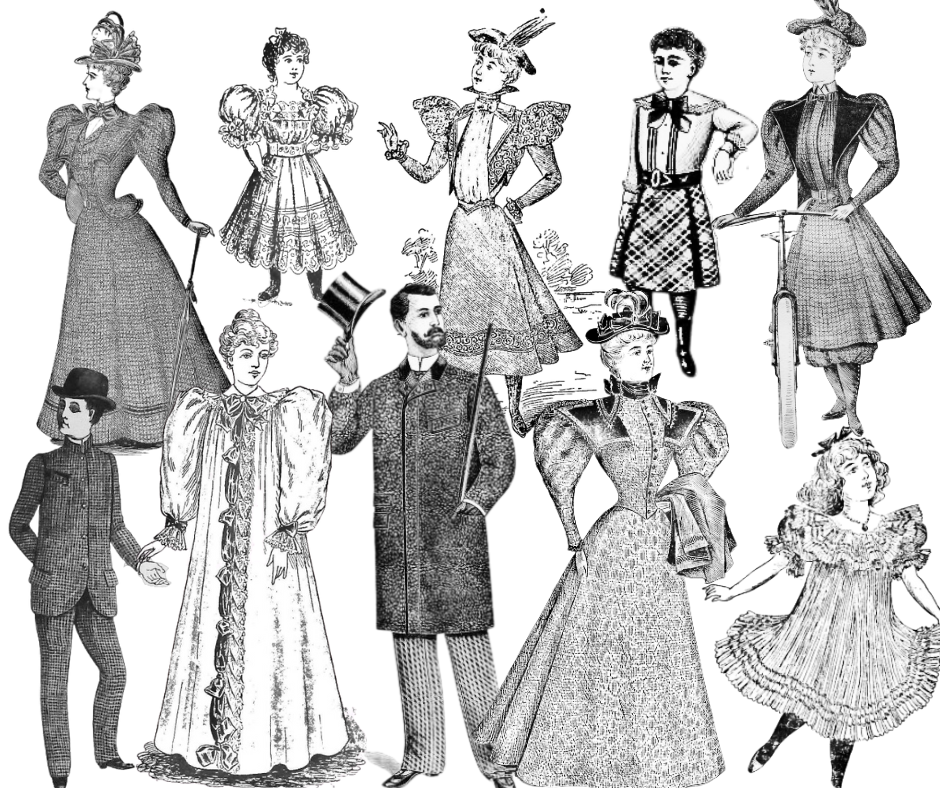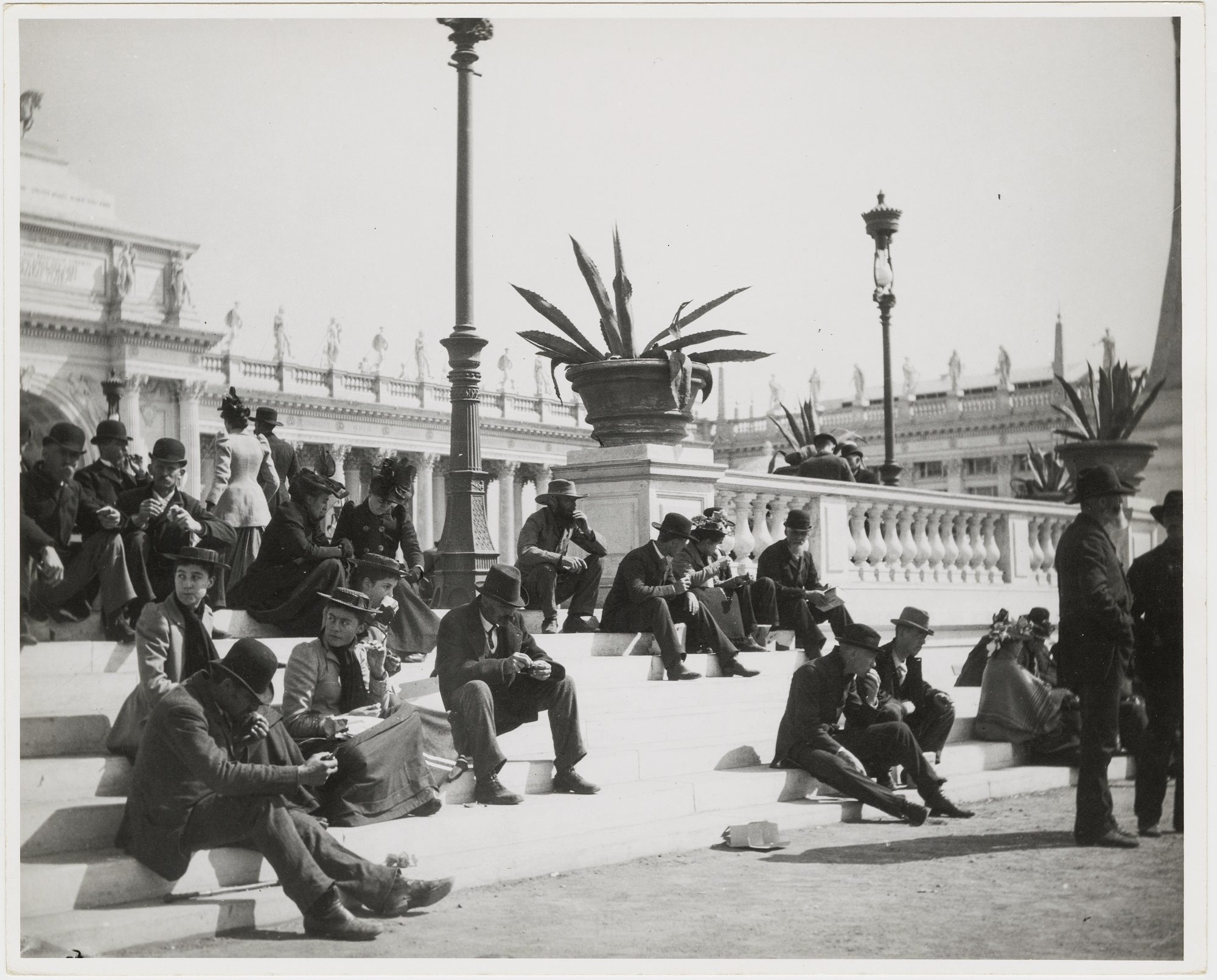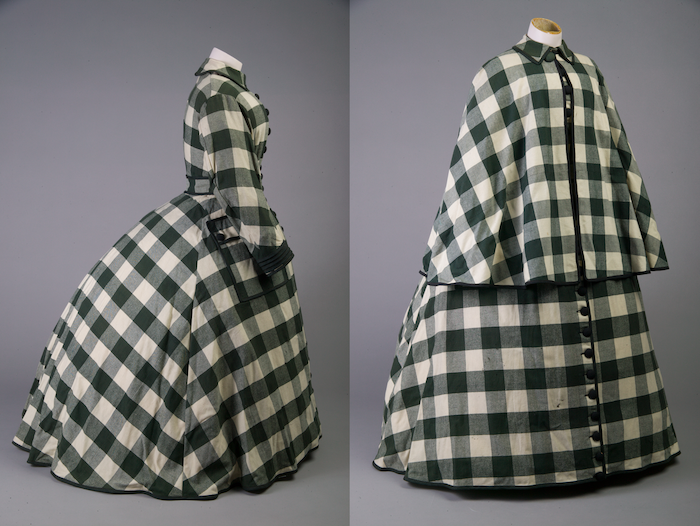For National Bike Month, CHM research and insights analyst Marissa Croft writes about sewing a women’s bicycle costume using an 1897 pattern from the Abakanowicz Research Center.
Daisy, Daisy, give me your answer, do!
I’m half crazy, all for the love of you!
It won’t be a stylish marriage,
I can’t afford a carriage,
But you’ll look sweet, upon the seat,
Of a bicycle built for two!
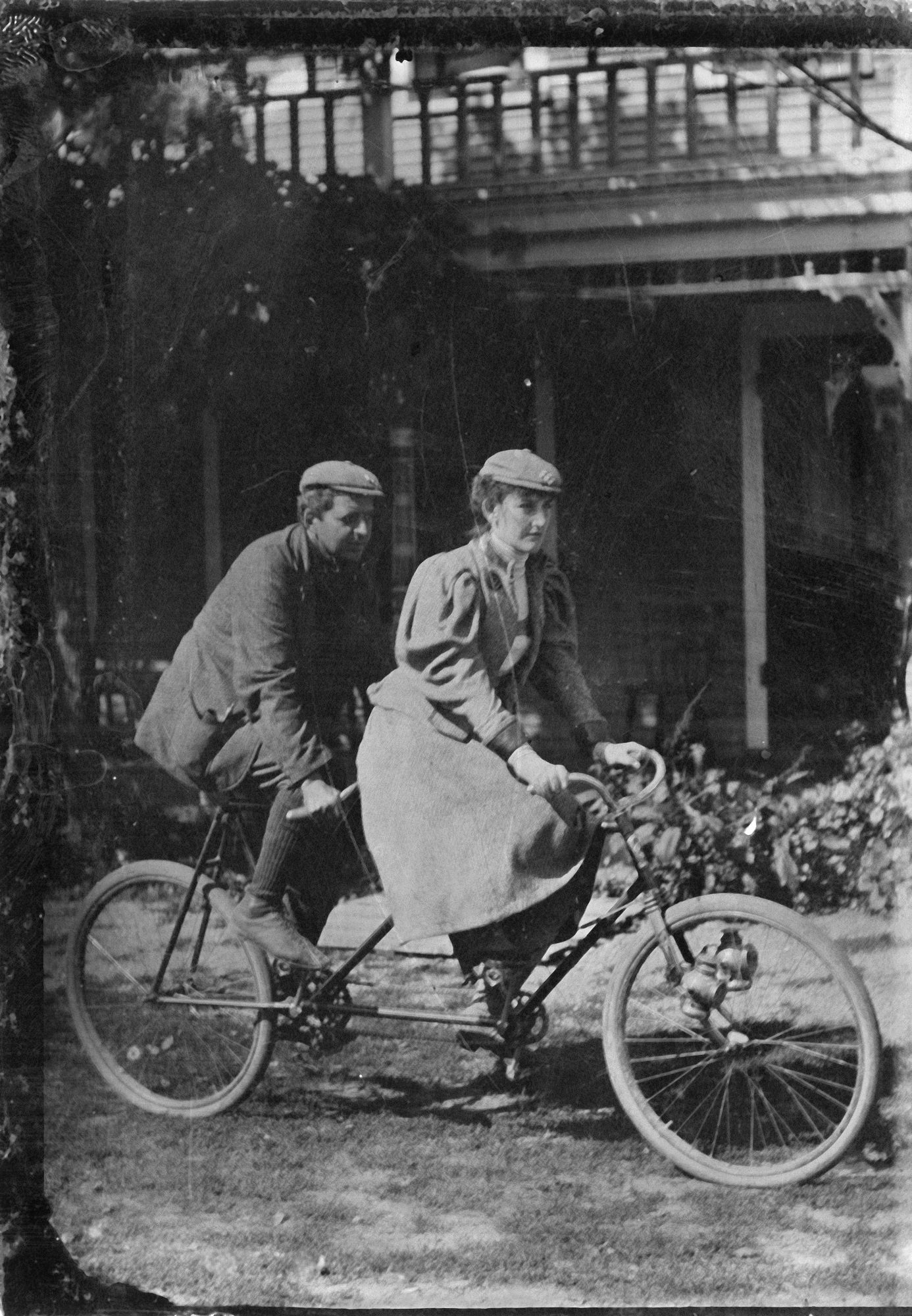
Mae Sawyer Stibgen riding a tandem bicycle with unidentified man on an outing with the Lincoln Cycling Camera Club, September 20, 1896. CHM, ICHi-020570
In 1892, Harry Dacre penned the popular song “Daisy Bell” shortly after the invention of the safety bicycle, the style most of us ride today. The safety bicycle brought cycling to the masses because unlike the Penny Farthing with its enormous front wheel that would send riders flying over the handlebars, it was vastly more affordable, comfortable, quick, and, well, safe. These improvements made cycling more accessible to women in search of thrill, like early women’s cycling champion Kitty Knox. In an era where floor-length skirts were the norm, what would Daisy Bell have worn to peddle properly during her wedding on wheels?
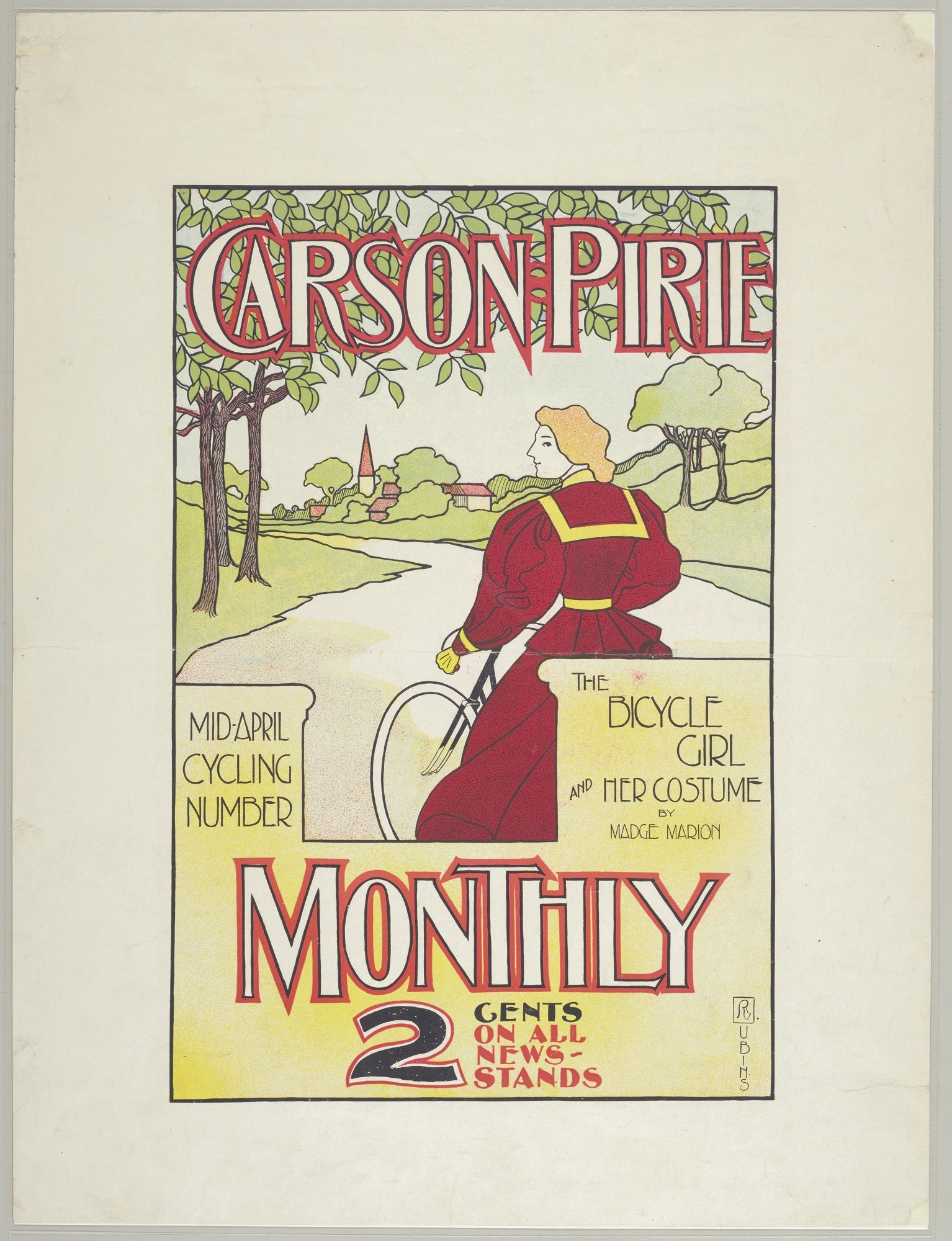
Broadside advertising Carson-Pirie Monthly Mid-April Cycling Number, featuring The Bicycle Girl and Her Costume by Madge Marion, Chicago, 1896. CHM, ICHi-076879
Cycling costumes for women of the 1890s took a few different forms and offered a variety of ways to preserve the cyclist’s modesty without sacrificing mobility. From shorter skirts to bloomers, the bicycle girl and her clothes soon became synonymous with modern, mobile, girls-on-the-go.
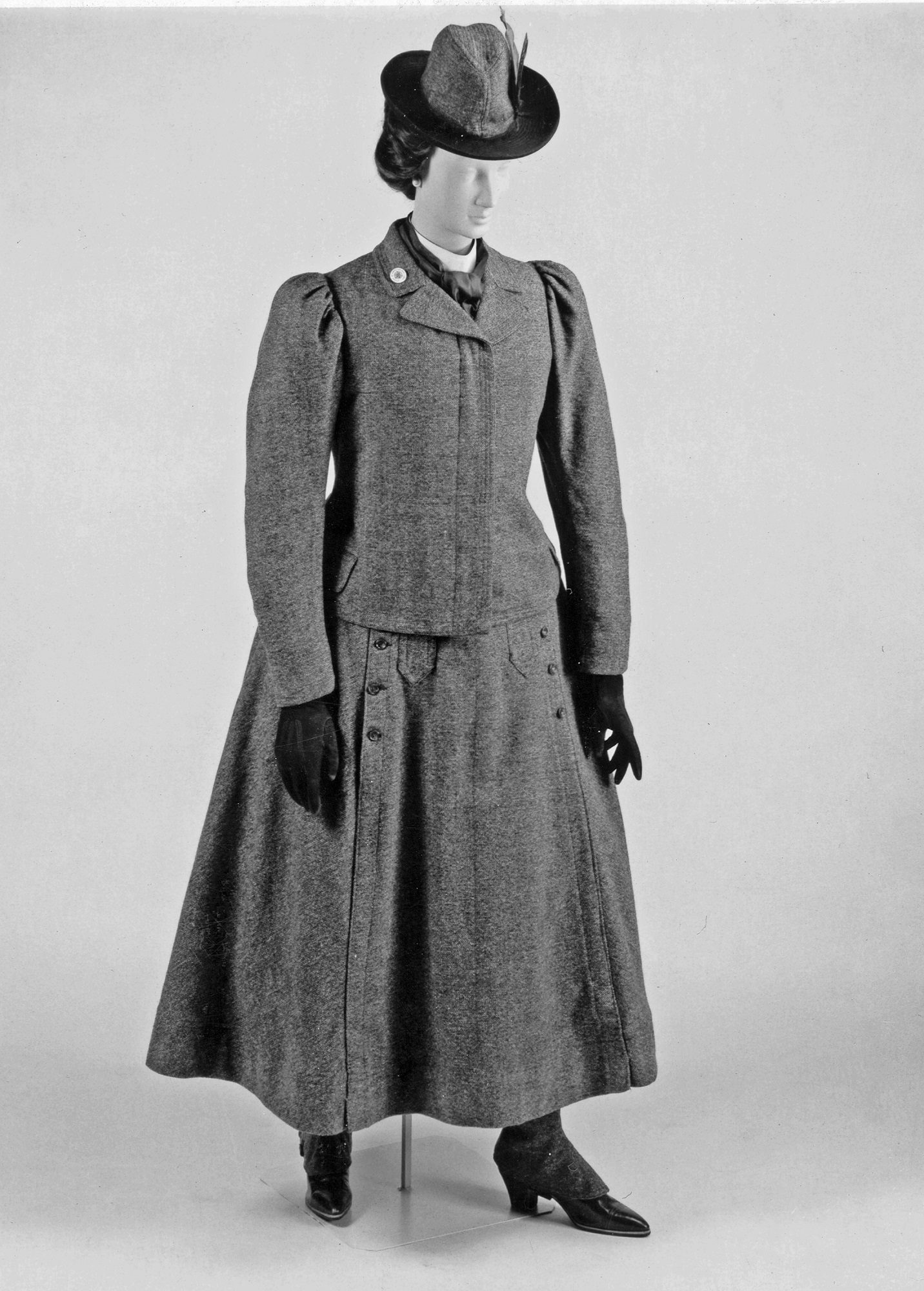
Women’s bicycle outfit by Marshall Field & Co., 1887. CHM, ICHi-066361
As a casual cyclist and fashion history enthusiast, I’ve often wondered about how comfortable it actually was to ride in these costumes. During a research appointment at the Abakanowicz Research Center, I came across a set of pattern books by Chicago tailor W. H. Goldsberry. These books contained detailed schematics for creating men’s, women’s, and children’s clothing of the 1890s, and I was delighted to see that the 1897 edition contained THREE different patterns for women’s cycling costumes!
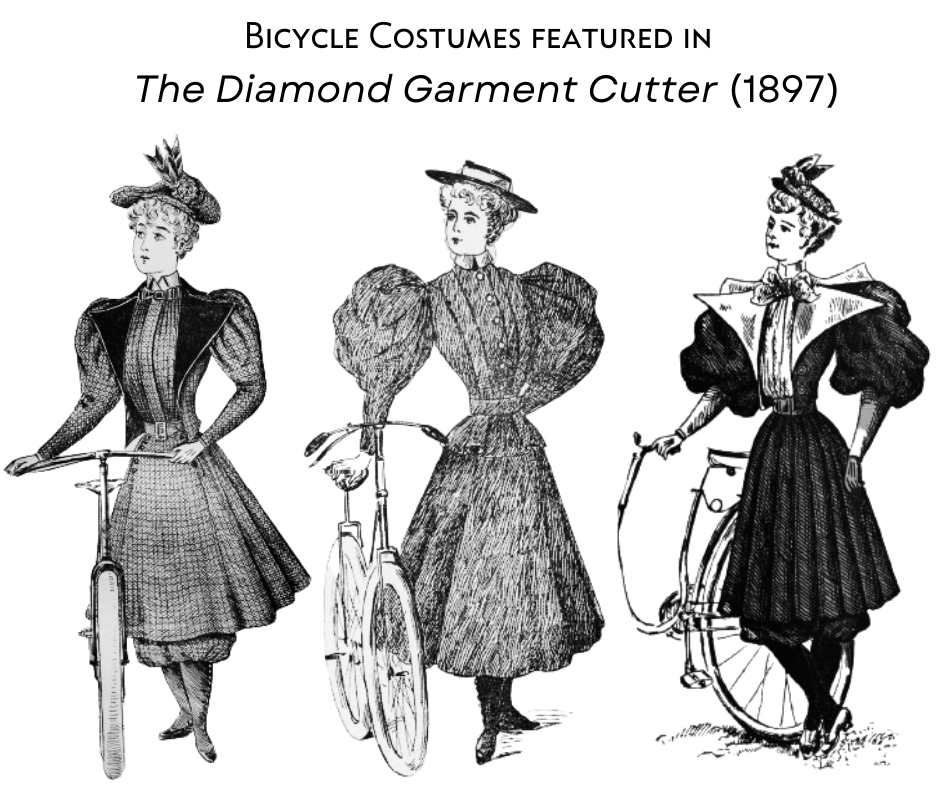
It was the third costume that caught my eye: a gathered skirt, bloomers, and a jacket with enormous sleeve style the book said was “called the Ferris wheel sleeve.” The name was most certainly an attempt to cash in on the hype from the first Ferris wheel’s debut at the 1893 world’s fair. I knew I had to make this costume and see if the sleeve truly lived up to its name!
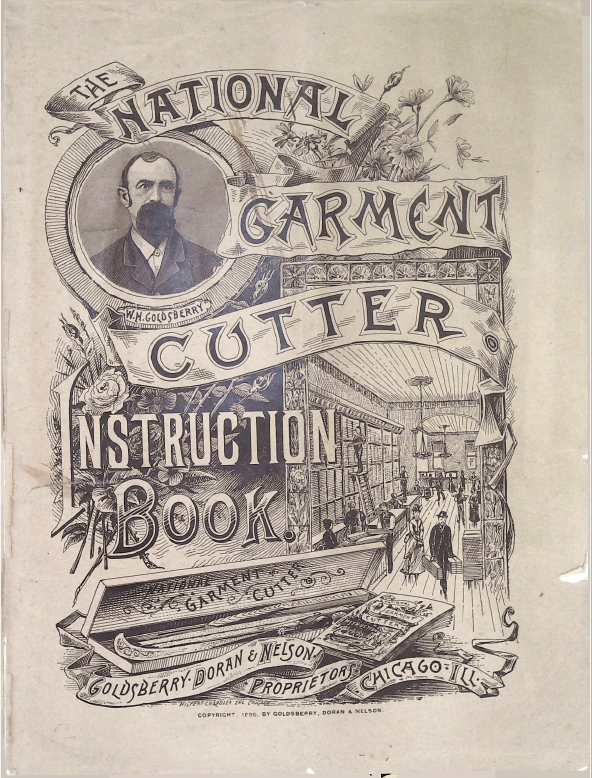
The cover of the 1880 National Garment Cutter instruction book.
The Diamond Garment Cutter system (initially called the National Garment Cutter system) relies on scaling up diagrams using apportioning rulers. A sewist would select a ruler that corresponded to the wearer’s chest or waist measurement, and then copy the diagram onto paper, using the numbers given on the diagram as a reference. The rulers’ markings were spaced closer or further together, so that the resulting pattern would automatically be scaled up or down to fit the wearer’s measurements. This system was intended to greatly simplify pattern drafting, with the authors boasting that, “None have ever before reduced the art of cutting everything worn to but one system and rendered that one so simple that a child can understand, and but with few instructions successfully operate it.” (The National Garment Cutter General Directions, 1884). If you’d like to try your hand at making something from these patterns, I’ve included detailed instructions in a separate blog post.
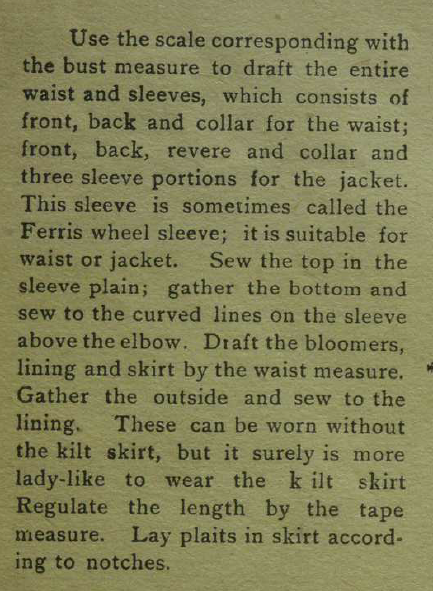
An example of the sparse directions accompanying these patterns.
Once I’d patterned the jacket and bloomers, I realized I wouldn’t have enough fabric to make the kilt skirt that goes over the bloomers, but luckily the instructions said the ensemble “can be worn without the kilt skirt, but it surely is more lady-like to wear the kilt skirt.” Here’s to being un-lady-like!

Left: Women’s bicycle costume from The Diamond Garment Cutter Book of Diagrams by W.H. Goldsberry, 1897. Right: Marissa Croft, 2022. Photographs by Marissa Croft
Final review of the cyclability of this outfit? I’ve worn it to bike around Chicago and the outdoors several times now, and the bloomers are extremely comfortable. The loose fit ensures your legs stay cool and protected from the sun, and their massive volume (paired with the Ferris wheel sleeves) also increases your visibility on the road to motorists. So, whether you choose to ride around on a bicycle built for one or two, I highly endorse mixing it up and giving cycling bloomers a try!
Learn More
- PDF of patterns for the three Ladies’ Cycling Costumes
- Research fashion history at the Abakanowicz Research Center using the Costume Research Files.
- CHM Costume and Textiles Image Gallery
- Costume and Fashion Research Library Guide
- Follow my sewing projects on Instagram: @sinistra.marissa
